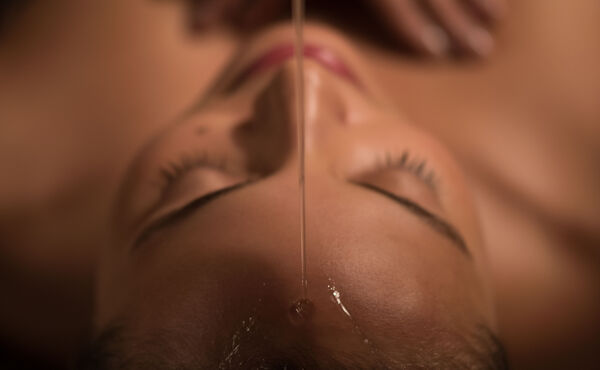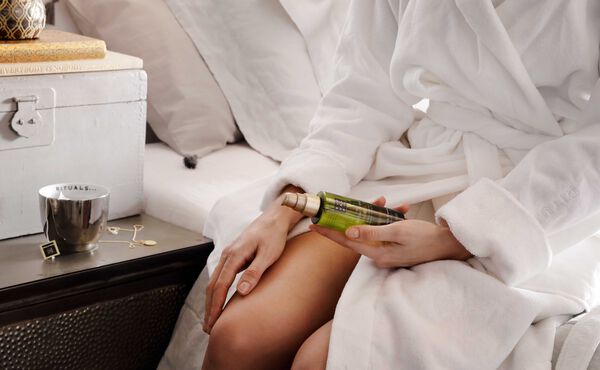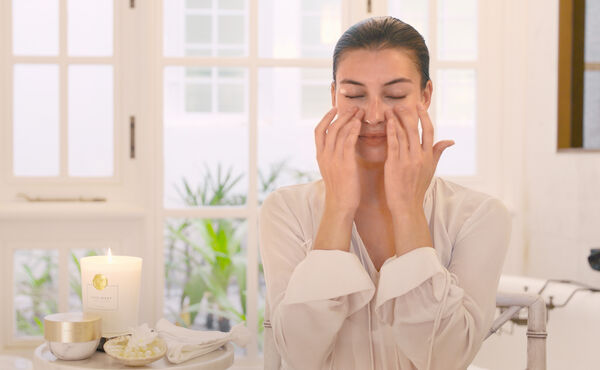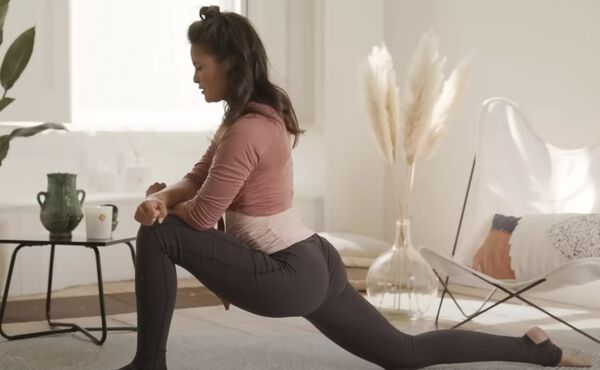Whether you’re on your feet and moving all day or you’re hunched over your computer at your desk, chances are your body won’t like either option. How will you know? Because you’ll have to deal with constant aches, pains and niggles. But rather than booking in for a sports massage, there’s a new school of thought that suggests fascia stretching is the answer to your ailments.
Fascia is the connective tissue that surrounds every organ, bone, muscle and nerve fibre in your body and keeps everything in place, but it’s had little airtime until recently. That’s because any tightness or pain is usually chalked up to the muscles or joints when actually it could be the fascia to blame. Designed to stretch as and when you move, if you yourself don’t stretch and move, the fascia becomes sticky and tight which can limit your mobility, whilst triggering knots and sore spots. It’s also why your pain could keep coming back on repeat, even after you’ve had umpteen massages.
One way to keep your fascia happy is with stretches. People have been practising this for centuries in Thai massage, which gradually stretches the whole body rather than the western sports massages where a practitioner will only target specific areas of the body or muscle groups. “The benefits of working with the fascia are that you never just address the pain, or the part that is complaining,” explains Suzanne Wylde, stretching trainer, alternative therapist and author of Moving Stretch. “You are always looking at the body as one complete system, a closed circuit within which there are many chain reactions and relationships that constantly shift and impact each other. People who work with fascia see patterns and will try to get to the root cause rather than just a patch up job.”
The Method
There are several forms of stretch therapy, the most common being fascial stretching therapy (FST) that uses assisted stretching. For this you lie down while the practitioner employs moments of resistance, push-pull motions, cradling limbs and rotating joints to relieve and release the fascia and improve mobility and flexibility.
Suzanne uses a form of stretching that favours continuous resistance, so the stretch happens as you move. “It involves moving fluidly with some tension held in the muscles, just like when we yawn - this tension helps to engage the fascia and recondition it allowing us to release stuck areas and promote the movement of fluid to keep our fascia and body strong and healthy,” she says. “I sometimes refer to it as ‘massage from the inside’ because you are creating movement of structures within the body which is different to a traditional massage where you receive pressure from the outside-in.”
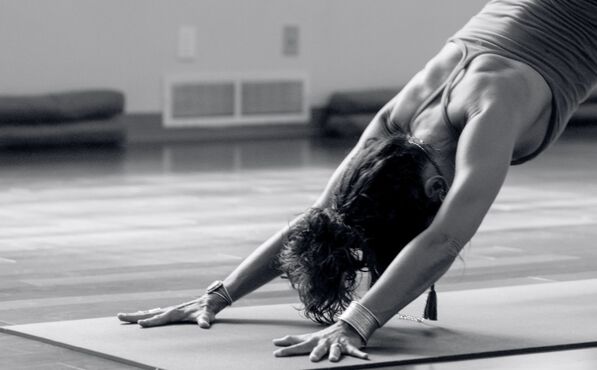
The Benefits
Because it’s a relatively new method, studies are limited but research and testing is on the up. One study that looked at the benefits of Thai foot massage and stretches in people with peripheral neuropathy (a nerve condition) found that it helped their balance. This could be because these types of movements improve blood circulation through the tissues which in turn helps with balance.
Another study into FST found that after four weeks of twice-weekly sessions people had a 15% increase in lower body strength and an increased range of motion in their upper and lower body. Again, people’s balance was improved.
In Suzanne’s book, she documents how stretching can make you stronger because it boosts the number of cells that build muscle and that after four weeks of stretching, elderly people improved their gait so much that they walked like young people. “It is clear the benefits of stretching extend far beyond simple flexibility,” she says. “My clients seem to have a much better posture, energy levels and feel more comfortable in themselves. They perform better in sport and some have also reported improved sleep and appetite.”
It’s good for the face too
Another trend starting to emerge is the fascia facial. Midway between a face massage and a face workout, it incorporates myofascial shift to move the facial tissue to its anatomically correct place and strengthens connections and ligaments. The result? A brightening and lifting effect that some say can even change your face shape. Although you don’t even need to touch the face to get glowier skin according to Suzanne: “Stretches that involve the larger areas and muscles of the body are great for the face because it is these areas of tension that pull down on our faces and make us look older. Release areas like the quads, hamstrings and front and back of your torso and you’ll see fast changes in the vitality and shape of your face.”
The do’s and don’t’s
It’s advised that you go pro, especially if you are experiencing chronic or reoccurring pain but that’s not to say you can’t set yourself up for some stretches at home. In terms of do’s and don’ts, Suzanne says DO make smooth flowing movements, work with your body not against it and stretch into movements carefully and conservatively but DON’T push through pain, force your natural range of motion or over stretch for too long. ‘Bouncing’ is also a no-no.
There’s no right or wrong time to do it but in the morning your discs could be prone to injury so walk about a bit first and if you’re doing sport or other exercise, don’t stretch in the 40 minutes beforehand, as Suzanne says this can temporarily reduce your elasticity, strength and stability.
Quick fixes
Whatever your niggle Suzanne says you need to stretch the opposite area of your body to release it - so if you have back pain, open up the front of your body or if you have shoulder pain, stretch your legs - this will help rebalance the body. “If you hunch in front of your computer do stretches that open you up, make you look up and stretch out your arms up and back. If you’re in a job that involves stretching and reaching lots, try a child’s pose.” Or if you just want a go-to routine that will set you up for the day ahead, try Suzanne’s recommended super stretches below. You’ll feel more malleable in minutes...
1. Straight Leg Lean Forward
Stand with your foot resting on a low wall, step or chair, with a slight bend in your knees. Pull your foot downwards constantly and lean forward from your hips to stretch the back of that leg. Make sure that you are not transferring your weight forward as you bend and keep your weight on your standing leg.
2. Sitting Cross-Legged, Lean Forwards
Sit crossed-legged, with your knees and feet pushing themselves down towards the ground and your hands under your knees pulling up to give them something to push against (not to lift them). Maintain this resistance as you lean forward to stretch as far as you can comfortably. After a few reps swap the leg that is on top.
3. Overhead Shoulder and Chest Stretch
Gripping a yoga strap, belt or bathtowel above your head firmly in both hands, hold your arms in a “V”. With your hands pulling continuously apart from each other to create tension, move your hands smoothly backwards behind you keeping your elbows straight. When you have gone as far back as you can comfortably reach, return easily to the starting position to complete one rep. When you reach the end of the stretch return easily to the start and repeat. You can warm up by tensing your muscles less to start with and gradually building up.

